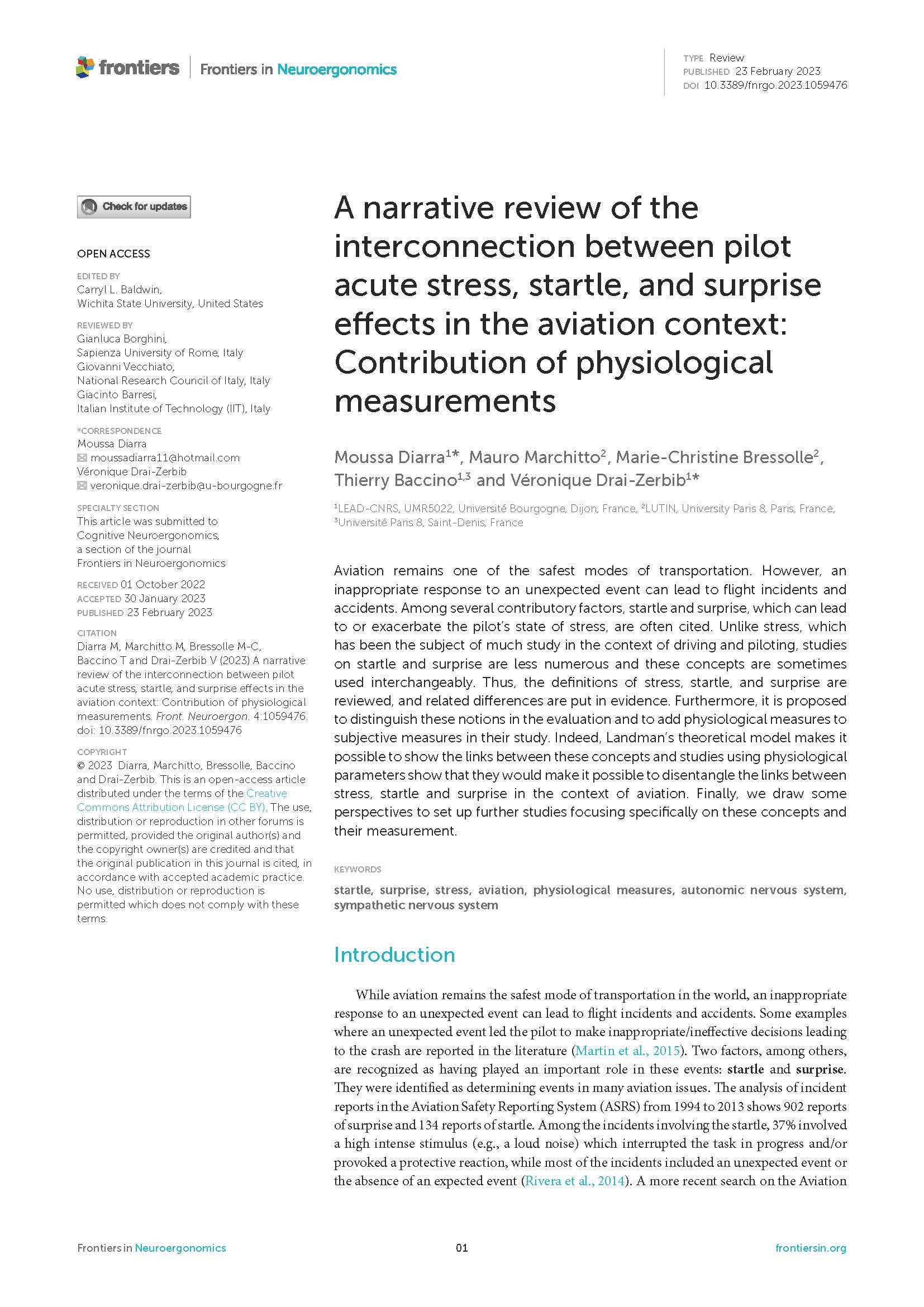Aviation remains one of the safest modes of transportation. However, an inappropriate response to an unexpected event can lead to flight incidents and accidents. Among several contributory factors, startle and surprise, which can lead to or exacerbate the pilot’s state of stress, are often cited. Unlike stress, which has been the subject of much study in the context of driving and piloting, studies on startle and surprise are less numerous and these concepts are sometimes used interchangeably. Thus, the definitions of stress, startle, and surprise are reviewed, and related differences are put in evidence. Furthermore, it is proposed to distinguish these notions in the evaluation and to add physiological measures to subjective measures in their study. Indeed, Landman’s theoretical model makes it possible to show the links between these concepts and studies using physiological parameters show that they would make it possible to disentangle the links between stress, startle and surprise in the context of aviation. Finally, we draw some perspectives to set up further studies focusing specifically on these concepts and their measurement.
A narrative review of the interconnection between pilot acute stress, startle, and surprise effects in the aviation context: Contribution of physiological measurements
